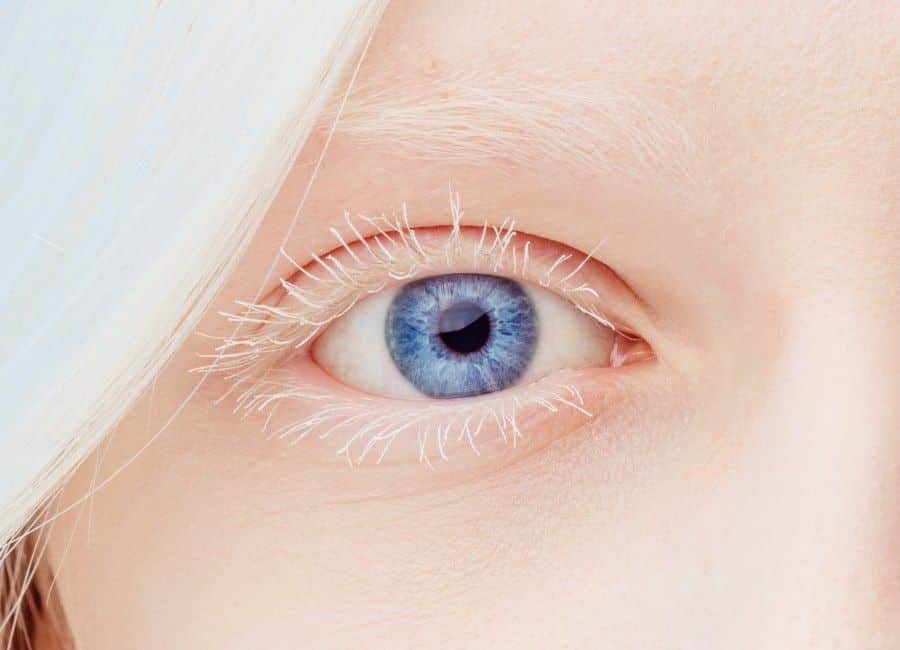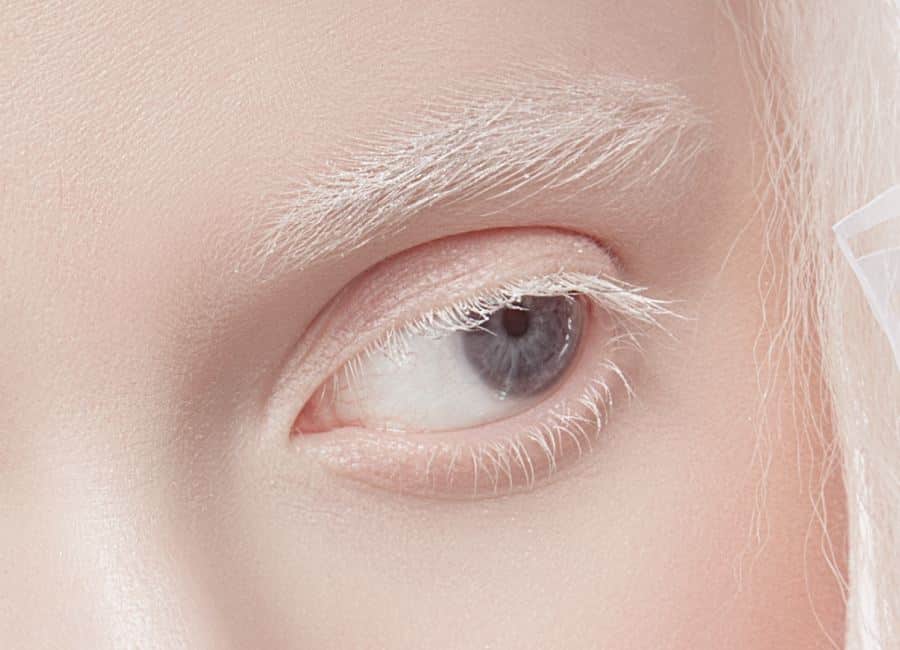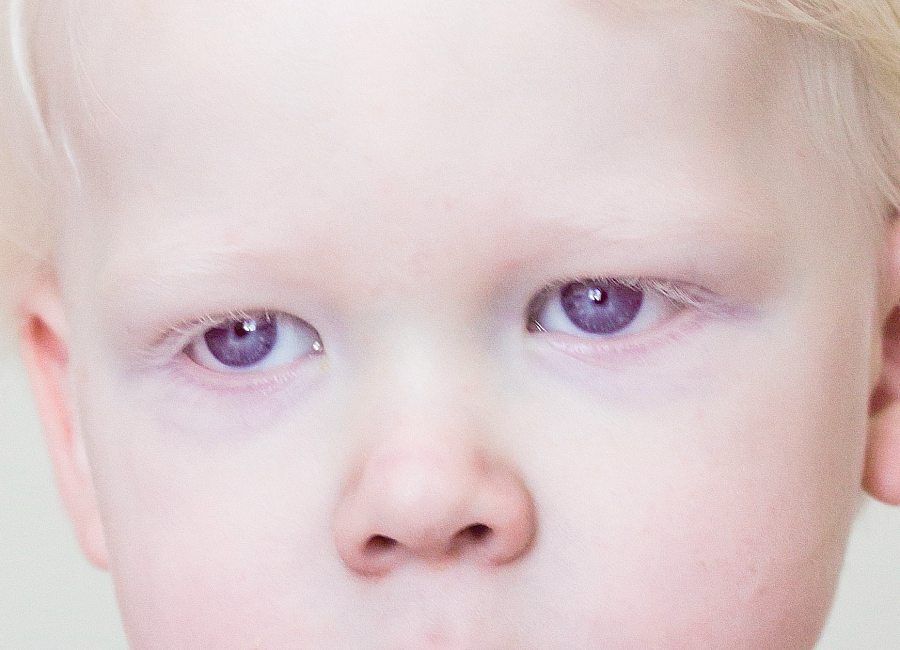Ocular albinism
El albinism is a genetic disorder hereditary that affects the way the body produces or distributes melanin, the pigment that gives color to the skin, hair and eyes. This condition can give vision problems.
There are different types of albinism. The ocular albinism is one of them and is characterized by affecting the eyes.
Ocular albinism
El albinism is a genetic disorder hereditary that affects the way the body produces or distributes melanin, the pigment that gives color to the skin, hair and eyes. This condition can give vision problems.
There are different types of albinism. The ocular albinism is one of them and is characterized by affecting the eyes.
What is ocular albinism?
Ocular albinism is a type of albinism that affects only the eyes, specifically cornea and retina. People with ocular albinism have uniform skin and hair color; however, his eyes are a very warm color and eyelashes are usually white.
Ocular albinism can cause nistagmus, photophobia and decreased visual acuity.
Causes of ocular albinism
El hereditary factor is the main cause of albinism, that is, this condition Is it being transmitted from parents to children.
Ocular albinism, also known as nettleship-falls albinism, is caused by alterations or mutations that affect the OA1 gene, located on the X chromosome.
This gene is a membrane-associated protein of melanosomes whose abnormal functioning produces a cluster of extremely large melanosomes within the cell.
This anomaly occurs only in men and those who inherit the gene through the carrier mother.
A pregnant woman carrying the gene has a 50% chance that the male child will be born with ocular albinism.

Women with the AO1 gene may have a coloration behind the eye, but they are not diagnosed with ocular albinism because do not have vision problems Because of this anomaly.
When both parents have the gene, a type of albinism known as autosomal can occur. In this case the probability that the child will be born with autosomal albinism is 25%.
This type of albinism affects both men and women.
Symptom
Albinos may manifest symptoms that affect their physical appearance and / or others that affect vision. The physicists are:
- Colorless skin patches.
- Skin and hair of a lighter shade than usual.
- Lack of color in the hair, skin, or iris of the eye.
The first symptom that allows to identify an albino eye is the white eyelashes, since there are cases of ocular albinism in which the person has a dark colored iris.
Regarding the vision, it can lead to:
- Ocular albinism type 1 (OA1): affects only the eyes.
- Hermansky-Pudlak syndrome (SHP): It is caused by a change in a single gene. It can occur with a bleeding disorder, exactly the same as with pulmonary and intestinal pathologies.
- Oculocutaneous albinism: the albino person has a lack of color in the hair, skin and eyes and also suffers from vision problems. It is the most serious degree of albinism.
Between the visual symptoms that can cause ocular albinism type 1 we find:
- Lack of visual acuity y limited night vision.
- La stereoscopic vision It can be limited or reduced.
- nystagmus. Nystagmus is an involuntary movement that occurs in the eyes, mostly horizontally. The movement may be imperceptible to third parties. In people with albinism nettleship-falls the brain becomes accustomed to movement and vision is static.
- You do exist decreased binocular vision Strabismus can occur, which can cause the person to use their eyes separately or perform movements with lack of coordination.
Others symptoms of albinism that affect vision are:
- Squint.
- rapid eye movements (nistagmus).
- Sensitivity to light.
- functional blindness.
Diagnosis of ocular albinism
There are times when the doctor can detect albinism through visible signs such as hair or skin. However, perform genetic testing It is the best way to diagnose if you have albinism or not.
It is advisable to detailed study of the genetic history of affected individuals and their families, as this will provide an in-depth analysis that also dictates whether it can affect offspring.
Regarding the vision, the ophthalmologist can make a electroretinography, an exam consisting of measure the electrical response of eye cells to light.
These cells are part of the retina and to perform this test, anesthetic drops must be applied to avoid discomfort. An electrical sensor is then placed in each eye that calculates the electrical activity of the retina in response to a flickering light that is emitted.
In addition to what has been mentioned so far, there are also special tests on hair, skin or blood that can be used to make specific diagnoses.
Transmission
The first thing to keep in mind is that albinism is a chronic process for which there is no specific treatment, this means that the low pigment production or the anomalous development of the central vision cannot be corrected.
However, there are certain therapies and surgeries that can help improve vision of people with ocular albinism.
With regard to the skin, hair and eyes, it is very important to protect them from sunlight through the use of creams and sunglasses. However, regarding vision problems, other measures can be taken.
El use of glasses for sight It can help correct vision defects that occur.
The adaptation of some glasses with special filters It can improve vision and reduce sensitivity to light or photophobia. The use of sunglasses during exposure to ultraviolet rays is mandatory and of great importance in order to protect the eyes from sunlight and avoid major complications.
It is highly recommended prescription sunglasses so that the person with ocular albinism feels greater visual comfort.
El wearing colored contact lenses also helps treat light sensitivity and they are recommended in case the person presents anisometropia, which is the graduation difference of more than three diopters in both eyes.
When albinism has caused strabismus, the option of performing a surgery to help improve the appearance of the eyes.
In conclusion, ocular albinism can affect visual health in different ways and only the ophthalmologist can determine the appropriate treatment to treat the symptoms of each patient.
Some individuals with albinism may be entitled to financial aid for partial or total disability and it will be the ophthalmologist who must prepare a report so that the aid can be managed if required.
Photos of ocular albinism








